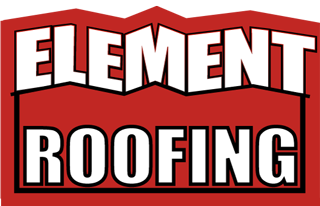
23 Mar Commercial Roofing: TPO vs EPDM
Commercial Roofing: TPO vs EPDM
If you’re looking for commercial roofing options in Pleasanton, you probably want to make sure that you choose the right roofing material for your business. There are several different commercial roofing options available – TPO, EPDM, shingles, tiles, metacrylic coating, and more.
But which commercial roofing material is right for you?
We will use this blog post to focus on two separate materials: TPO vs EPDM. We’ll go over the benefits and drawbacks of both materials, give you our opinions on each, and help you choose the right commercial roofing option for your business.
TPO Roof Pros and Cons
TPO, or Thermoplastic Polyolefin, is a mixture of two kinds of rubbers – polypropylene and ethylene-propylene. TPO is easy to install and is relatively environmentally friendly when it comes to commercial roofing materials. Because of its white member and color, it helps to cool your roof and consequently the inside of your building. TPO is resistant animal fats, oils, chemicals, bacteria, and dirt. It is also made of recyclable materials.
However TPO can stretch when exposed to high temperatures, leading to seem cracks and roof leaks. It also hasn’t been around for very long, so it doesn’t have a proven track record.
 Pros of TPO
Pros of TPO
- cost effective
- white membrane color
- helps to cool your roof
- resistant to animals fats and oils
- resistant to chemicals
- resistant to bacteria, dirt, and algae
- seams are heat welded
- environmentally friendly
- 100% recyclable
Cons of TPO
- shrinks when exposed to excessive heat
- can develop seam cracks if poorly welded
- has a relatively short track record
EPDM Roof Pros and Cons
 EPDM, or Ethylene Propylene Diene Monomer, is a synthetic rubber made up of oil and ethylene propylene. EPDM is another cost-effective commercial roofing option. However, it has a black membrane color, which can be seen as either a positive or negative. One thing’s for sure, it will definitely add heat to your rooftop. It is resistant to the elements, and is also environmentally friendly. I can last up to 50 years if properly adhered by a professional. EPDM is good for coastal climates with a lot of salt in the air.
EPDM, or Ethylene Propylene Diene Monomer, is a synthetic rubber made up of oil and ethylene propylene. EPDM is another cost-effective commercial roofing option. However, it has a black membrane color, which can be seen as either a positive or negative. One thing’s for sure, it will definitely add heat to your rooftop. It is resistant to the elements, and is also environmentally friendly. I can last up to 50 years if properly adhered by a professional. EPDM is good for coastal climates with a lot of salt in the air.
EPDM, however, does not have a high resistance to fats, oils, or substances such as gasoline or kerosene. It also requires special skills to install, meaning that if done improperly, it will develop leaks.
Pros of EPDM
- cost effective
- black membrane color
- resistant to rain, snow, sunlight
- withstands temperature fluctuations
- seams are adhered
- made of recycled materials
- environmentally friendly
- lasts 30-50 years
- comes in large sheets (meaning fewer seams)
- inexpensive repairs
- good for salty, cold climates
- good for waterproofing
- does not pollute rain run-off
Cons of EPDM
- warms up your roof
- poor resistance to animal fats and oils
- poor resistance to gasoline and kerosine
- poor chemical resistance
- requires special skills to install
The Right Commercial Roofing Option for You
Both TPO and EPDM are cost-effective commercial roofing options. Aside from color, the best choice for your business really depends on what your industry is. If you work in a restaurant or any other industry that deals with abrasive chemicals, EPDM is not the choice for you. However, if you’re looking for a black rooftop that is environmentally friendly and easy to repair, than EPDM is the way to go.
Contact your Element Roofing to discuss the right roofing material for your business, or to learn more about TPO vs EPDM roofing systems. Element Roofing offers roofing in Livermore, roofing in Castro Valley and the entire Bay Area.


